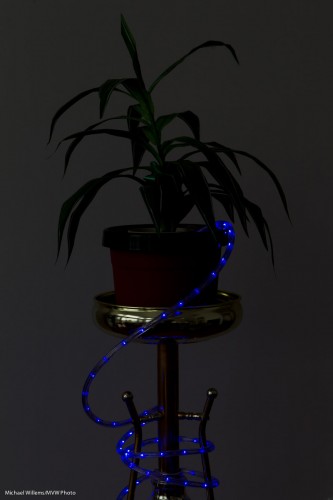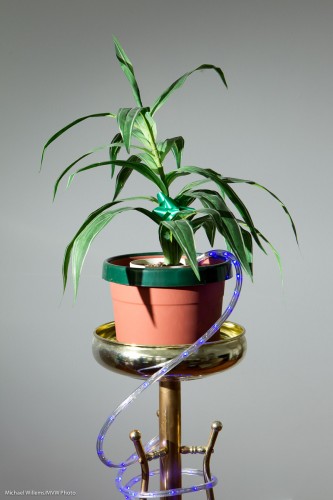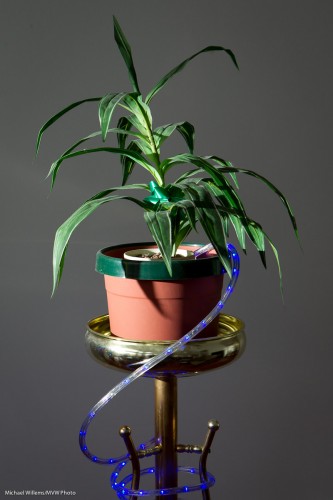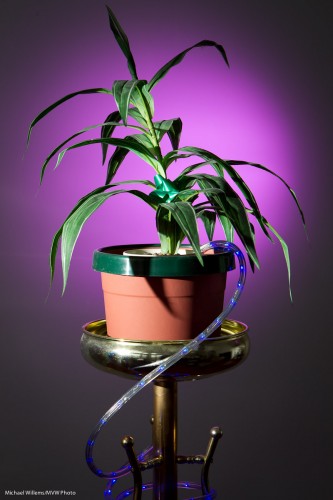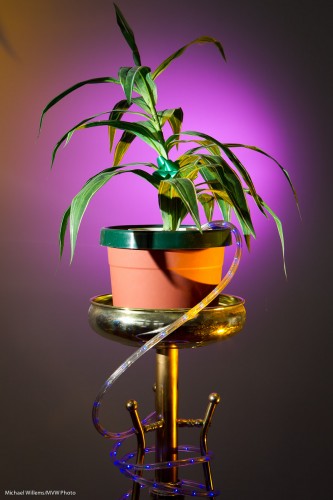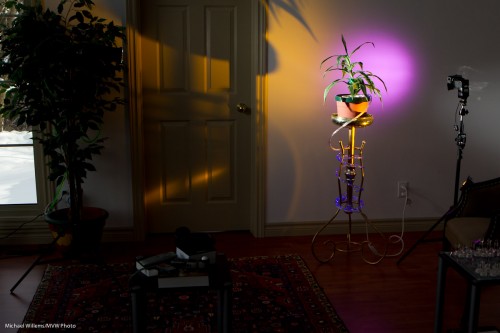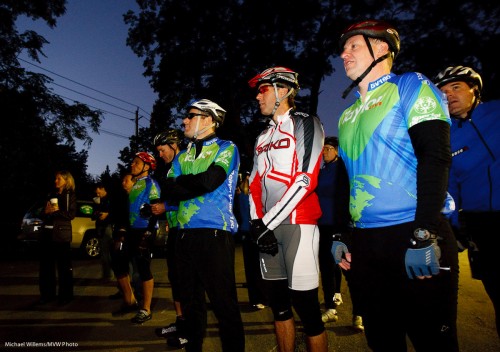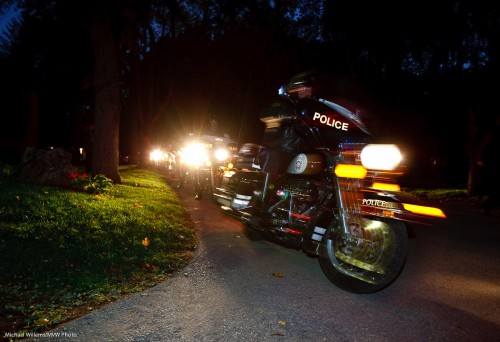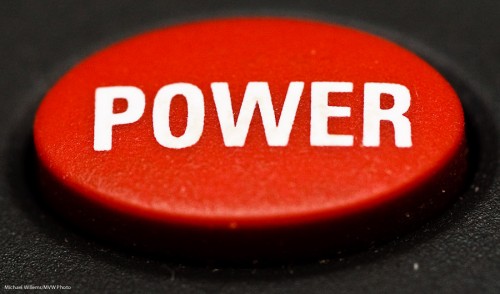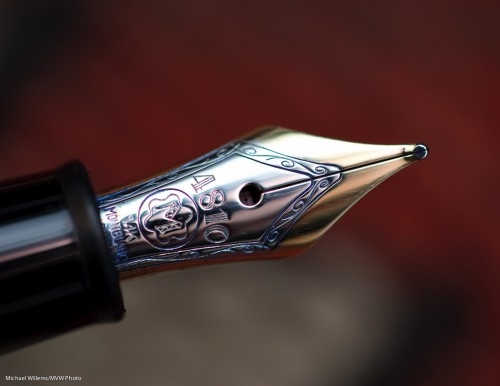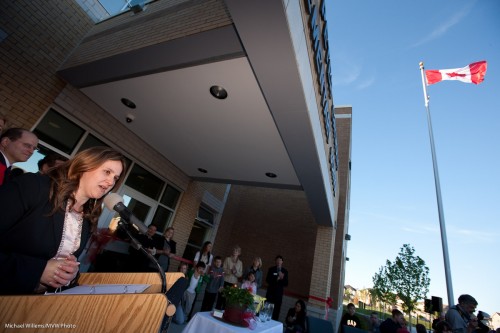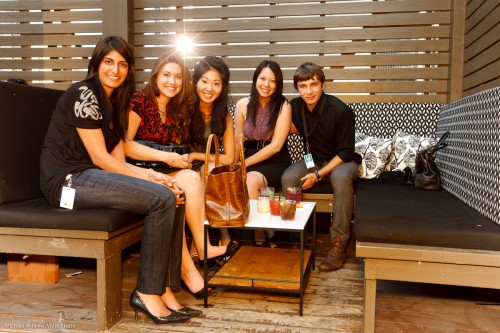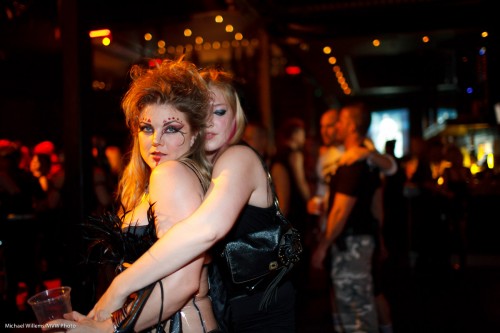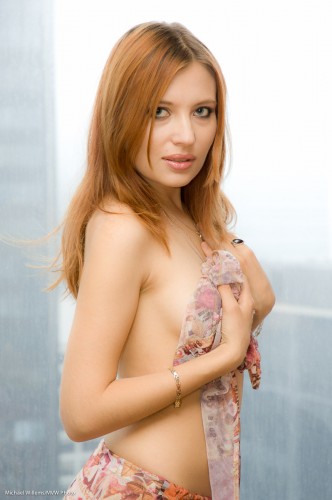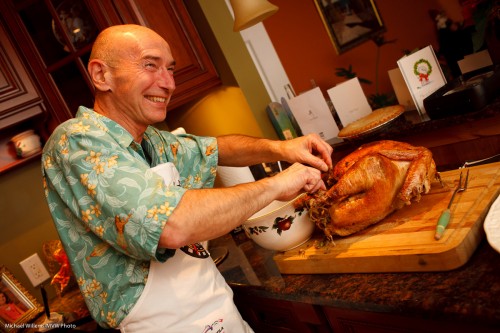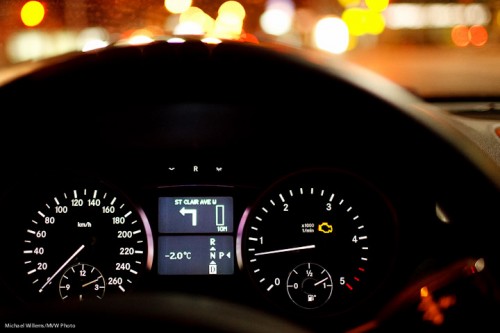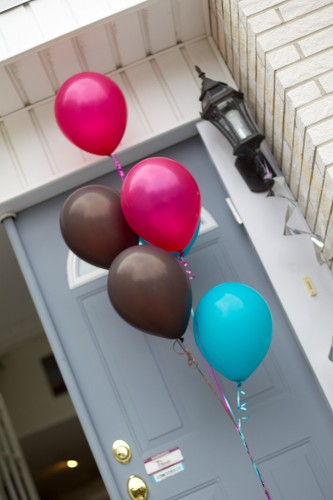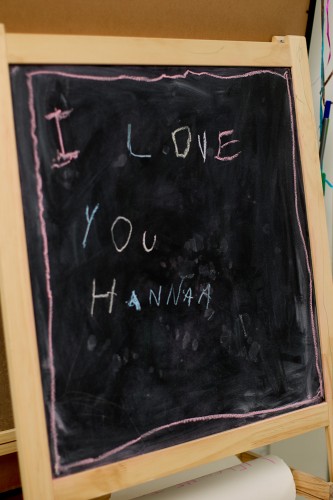…and the excitement, takes time.
So let me talk you to a shot I took today while explaining flash techniques. Talking you through my process will help you come up with a process of your own.
First, I decide what to use. Okay, small speedlights, but on manual, and used like studio lights.
Studio light means the available light does not work. So I set my camera to settings that ensure that – 200 ISO, f/8, 1/200th second. And before Ido anything else, I ensure that those settings give me a dark picture:
Then I add a flash. One bare flash on our left, once I set it to the right power level (half power, a power level that my light meter told me would result in f/8 at 200 ISO on the camera) gives me this:
Yeah, fine, but too much light on the background.
So now I add a Honl Photo snoot to the flash (a 430EX in manual mode, fired by a Pocket Wizard and fitted with a Speedstrap to attach snoots etc). That avoids spilling as much light on the background.
Now I get:
Niice. But now I think… Okay, can I add some excitement? Maybe some colour in a Hollywood spotlight.
So I think – what goes with green? Purple. Purple and green is a great combination which you will find in nature all over.
So I equip another flash (anotyher 430EX) with a Honl 1/4″ grid and on that grid, a purple gel. That gives me:
Nice, no? But now I am all into excitement, so I want to add more. And I also think the right side is a little dark. Okay.. “Excitement ‘R” Us”, I think: Honl’s Egg Yolk Yellow gel is my favourite since it gives a great saturated light.
So I add a third flash (also a 430EX and also with a Honl grid and the yellow gel) – like this:
So now I have this:
I could go on from there – you see how this works?
Important Note: David Honl is joining me in a special workshop in Toronto on Saturday March 19 – keep that date open, it’ll be fun. Dave and I have taught workshops together in Phoenix and Las Vegas, and the Toronto one will once again be fun. “Shooting Events” and “Creative Light” will be the themes. See you there!

